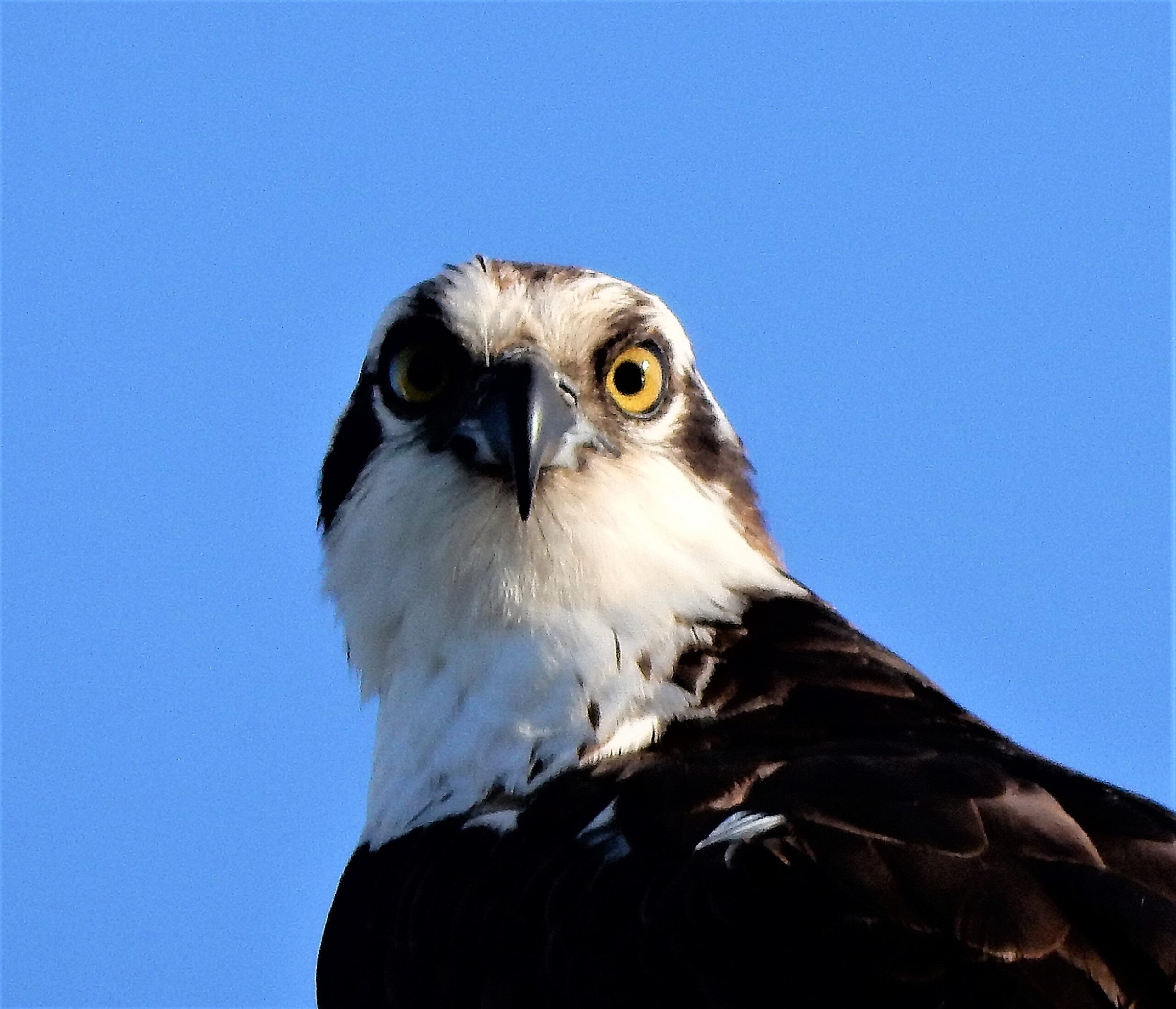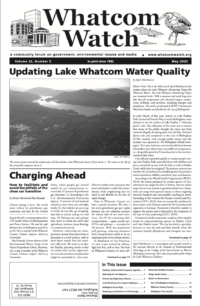by Joe Meche
The Nesting Season Is Here!
After what seems to have been a winter that would never end, there are signs everywhere that we might be on the way to better weather. Tulips and crocuses are peaking in mid-April, right on schedule, as are the daffodils and tulips in Skagit County. Our first swallows have made their annual journey to help control the seasonal populations of flying insects. Not only are the swallows beautiful and a joy to watch, they also serve a useful purpose.
At the same time, many of our saltwater species are donning their breeding colors before heading north and northeast to freshwater lakes and ponds. In the interim, migratory shorebirds are making their annual stopovers at places like Semiahmoo before continuing north. We might miss our winter birds initially, but there is excitement in the avian air as we await the first members of our annual spring chorus.
The members of the chorus are the smaller passerine or perching birds … the neotropicals … that migrate from warmer climes and descend on our backyards and woodlots annually to nest and nurture the next generation. Not only do they bring beautiful songs to fill the air, but they will also be sporting their splendid breeding colors. Even though the colors are geared toward attracting mates, they also attract the binocular-toting crowds to marvel at their brilliant plumage. Along with the visual delights, we should also pause to consider the fact that they’ve traveled thousands of miles to spend time with us!
Foremost among the migrants are the wood warblers that are an endless source of fascination, especially for the folks who are learning to bird by ear. Birding by ear comes in handy when the bird in the bush is well hidden by dense foliage. Learning to identify warblers by their songs takes a lot of practice, not to mention exceptional hearing. There are 34 species of warblers in North America and 15 of those have been recorded in Whatcom County. Though East and West can boast about certain species being their own, common yellowthroats, orange-crowned, yellow-rumped, and Wilson’s warblers are widespread enough to share across the continent.
While the colorful singers are often the more anticipated arrivals, there are other species that come from distant points in the south to nest locally. Most notable of these among the larger birds are the Caspian terns and ospreys. These two species are frequently found in the same general areas during the colder winter months, enjoying the sun and ample food resources that come with warmer environs. Smaller and fitting into the category of passerine species are the inimitable Swainson’s thrushes that don’t have the vibrant colors but make up for it with their flute-like songs. The equally inimitable black-headed grosbeaks are often thought of as robins on steroids. Lazuli buntings and western tanagers are two of our more colorful migrants, though not quite as melodious.
I alluded earlier to the arrival of the first swallows in the county, and I’ve always said that they are the true harbingers of spring, not the robins. Humans have always known the value of swallows in controlling mosquitoes and other possibly harmful flying insects. So much so that nesting gourds were hung by landowners in the spring to attract the birds to their property. Many of these gourds were focused on attracting purple martins, the largest members of the swallow family. I have fond memories of martins since a neighbor always had a full contingent of occupants in his traditional martin house when I was growing up in southwest Louisiana. There are nesting boxes and gourds where you can listen to their wonderful songs at the tip of the Semiahmoo Spit.
Seven migratory flycatchers and four species of vireos nest in the county and do their part offering more challenges to identify them by their songs. They often frequent similar habitats and together their songs in spring and early summer truly are music to our ears. Such is a big part of the excitement of the colorful migrants that return every year. In Rachel Carson’s “Silent Spring,” she awakened a generation to the adverse effects of humans and the use of pesticides on the environment and bird populations by creating the concept of a future without birdsong.
Even though the migrants seem to get more attention in the spring, quite a few of our nesting birds are year-round residents in the county. Black-capped and chestnut-backed chickadees are longtime favorites, especially if you maintain feeders and provide nesting boxes on your property. Looking into the array of other passerine species, you’ll find a good mix of resident and non-resident species. One of the more easily recognized is the spotted towhee, still known to many by their original name, rufous-sided towhee. They’ve also picked up a nickname that describes their personality … shy robins. They often forage in dense underbrush and brambles, so you hear them before you see them
Though larger than other passerines, the Corvid family is well represented throughout the year by crows and ravens as well as a seemingly endless supply of Steller’s jays. I documented Whatcom County’s first nesting pair of California scrub jays in 2012, and the numbers from that initial mating have expanded into southern British Columbia. Keeping in mind that Corvids are among the most intelligent of all birds, we would all do well to sit and observe them at length.
More of our resident birds that complement the migrants and nest locally are the wrens, creepers, and nuthatches. Pacific, Bewick’s, and marsh wrens are three of our most melodious singers in season. Though their preferred habitats differ, their songs are recognizable, even for those of us whose hearing is less than perfect. Brown creepers, like many of the smaller passerines, have songs and calls that border on the high end, so this birder relies on visuals. This is not the case when it comes to our red-breasted nuthatches, however, since their distinctive calls are quite loud and even insistent at times.
It seems that I might have saved the best of our resident passerines for last, and, since we have a long history together, it’s no surprise. In wetland habitats like Scudder Pond, you’ll be hard pressed not to hear the spring chorus of one of North America’s most recognizable and numerous birds … the red-winged blackbird. My hometown was surrounded by rice fields which provided ideal nesting habitat as the rice grew throughout the spring and summer. Well after the nesting season was over and the rice was harvested in the fall, the blackbirds found sustenance there throughout the winter.
Given their predilection for the rice fields, they were called ricebirds by the locals. My Little League team was often in competition with the only other team in town … the Ricebirds! The local rice mills shipped sacks of rice around the world with the Ricebird logo emblazoned on the burlap. All things considered, it was easy to connect with red-winged blackbirds. Whenever I need a shot of nostalgia, I just head to Scudder Pond.
Looking back, I’m sure that I’ve left out a few species, both in the slate of migrants as well as that of our resident birds. All things considered, we’re fortunate to be able to witness the ebb and flow of nature throughout the year. With spring and summer ahead, we’ll leave our respective shelters to move about and observe the miracles around us and hopefully find some goodness in these crazy times. Of course, in five or six months, the pendulum will swing and we’ll begin anew. In the workings of the world, my French-speaking grandmother handled everything with her favorite phrase, “c’est la vie.”
______________________
Joe Meche is a past president of the North Cascades Audubon Society and was a member of the board of directors for 20 years. He has been watching birds for more than 60 years and photographing birds and landscapes for more than 40 years. He has written over 200 columns for Whatcom Watch.





























